Cirsium mohavense, Mojave Thistle
.jpg)
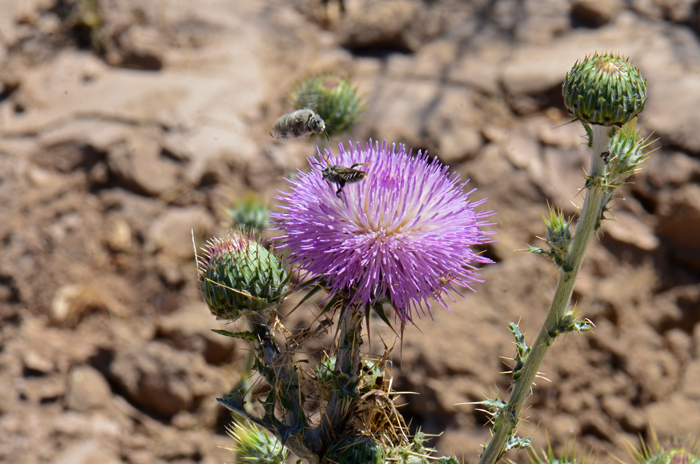
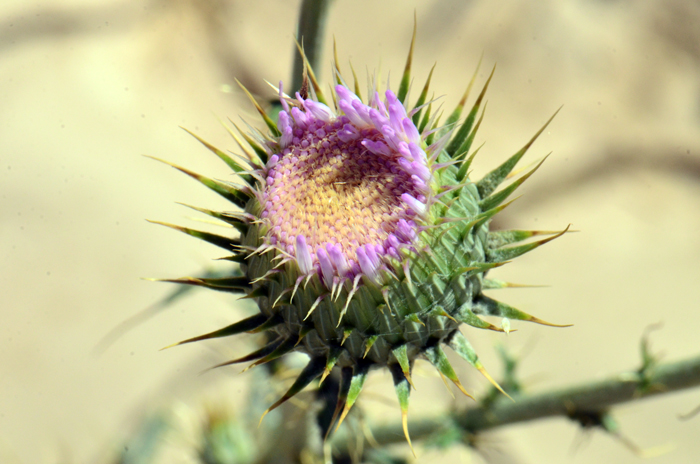
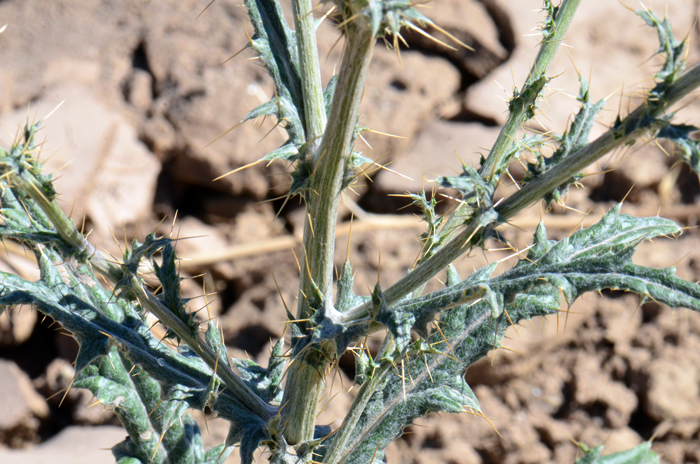
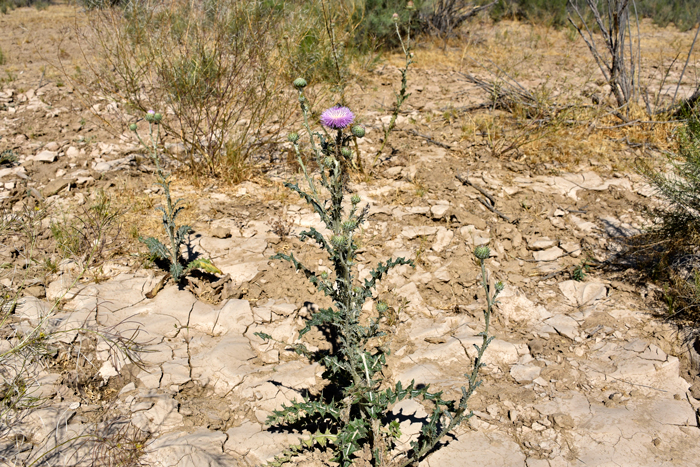
Scientific Name: Cirsium mohavense
Common Name: Mojave Thistle
Also Called: Virgin Thistle
Family: Asteraceae, Sunflower Family
Synonyms: (Cirsium virginense)
Status: Native
Duration: Biennial or perennial
Size: 1 to 8 feet (.3-2.5 m) tall.
Growth Form: Forb/herb; 1 or many stems, erect, the stems are densely woolly stem branches spreading near the top.
Leaves: Green, leaves up to 24 inches (60 cm) at the base of the plant; alternate along stem; blade shape variable, oblong-elliptic to oblanceolate, leaves toothed and deeply lobed; spiny, main spines are slender to stout.
Flower Color: White, pink or lavender; inflorescence a spreading array of clusters of 1 to many floral heads; occasionally on short axillary branches; spiny phyllaries, phyllary margins arachnoid to glabrate, outer phyllaries lanceolate or ovate; fruit a cypsela.
Flowering Season: June to October
Elevation: 800 to 7,000 feet (250- 2,200 m) or higher.
Habitat Preferences: Wet or moist areas, damp soils, streams and dry streams, springs, canyons, and some are found in meadows in desert woodland areas.
Recorded Range: Mojave Thistle is native to the southwestern United States: western AZ, Great Basin Desert areas of CA, NV, southwestern UT.
North America & US County Distribution Map for Cirsium mohavense.
North America species range map for Cirsium mohavense:
North American range map courtesy of Virginia Tech, Dept. of Forest Resources & Environmental Conservation
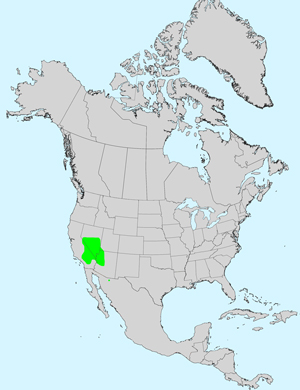
U.S. Weed Information: Unknown
Invasive/Noxious Weed Information: In North America the genus Cirsium is listed as a Noxious Weed by the States of:
Plants included here are invasive or noxious. See the Comments: section below for additional information regarding “noxious” thistles.
Wetland Indicator: In North America Cirsium mohavense has the following wetland designations:
FACU = Facultative Upland, usually occur in non-wetlands, but may occur in wetlands
Threatened/Endangered Information: Unknown
Genus Information: In North America there are 91 species for Cirsium. Worldwide, The Plant List includes 481 accepted species names and a further 812 scientific names of infraspecific rank for the genus.
The genus Cirsium was published by Philip Miller in 1754.
In the Southwestern United States: Arizona and New Mexico each have 19 species of genus, California has 26 species, Nevada has 16 species, Texas has 12 species, Utah has 23 species. All data approximate and subject to revision.
Comments: Mojave Thistle is somewhat salt-tolerant and primarily found in Mojave Desert ecosystems. This species is also found in the southern areas of the Great Basin Desert and other nearby regions of California, Nevada, western Arizona, and southwestern Utah.
The genus Cirsium in general, has received adverse notoriety because of the introduction of two thistles native to Europe and now widespread throughout North America. The Canadian Thistle, Cirsium arvense and and the Bull Thistle, Cirsium vulgare are both listed as noxious primarily by agricultural interests. The Canadian Thistle and Bull Thistle together for example are listed as noxious weeds in 33 and 9 states respectively.In reality, most southwestern native thistles, including Graham's Thistle, are non-aggressive; non-invasive and beneficial as pollinators. Our native thistles have evolved over thousands of years and have mostly thrived without ever becoming weedy. However, many native thistles are now threatened and some species are at risk of extinction.
In Southwest Desert Flora also see: Arizona Thistle, Cirsium arizonicum, Graham's Thistle, Cirsium grahamii, New Mexico Thistle, Cirsium neomexicanum and Yellowspine Thistle, Cirsium ochrocentrum.
For an interesting article on native thistles in North America see Native Thistles: A Conservation Practitioner's Guide, published on-line by The Xerces Society, For Invertebrate Conservation.
Thistles of the genus Cirsium are known as “plume thistles” because they have feathered hairs on their pappi while thistles of the genera Carduus, Silybum and, Onopordum have a pappi with simple unbranched hairs.
The genus Cirsium was published by Philip Miller in 1754.
The species epithet "mohavense" is a reference to the Mojave Desert, the epicenter of its distribution.

